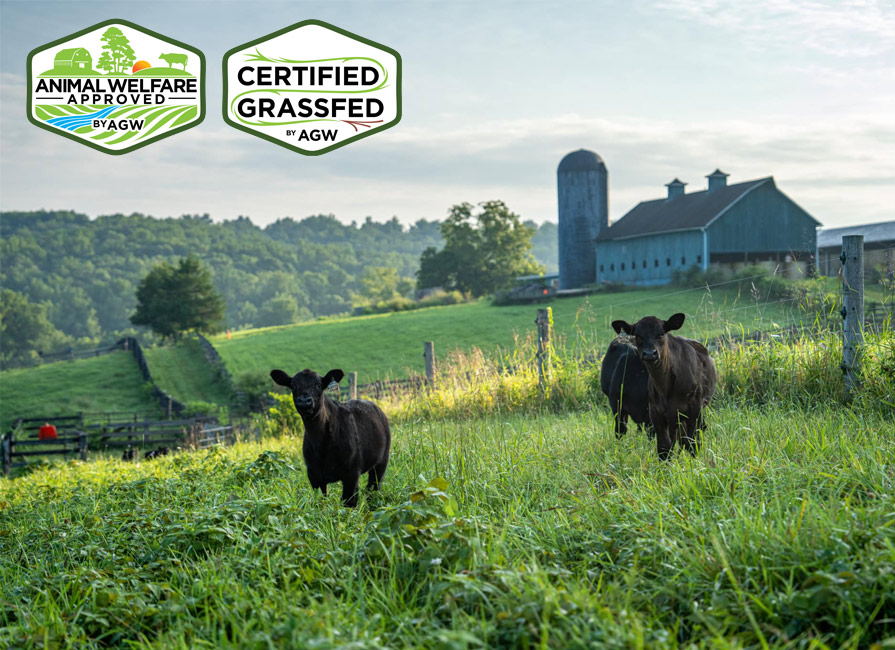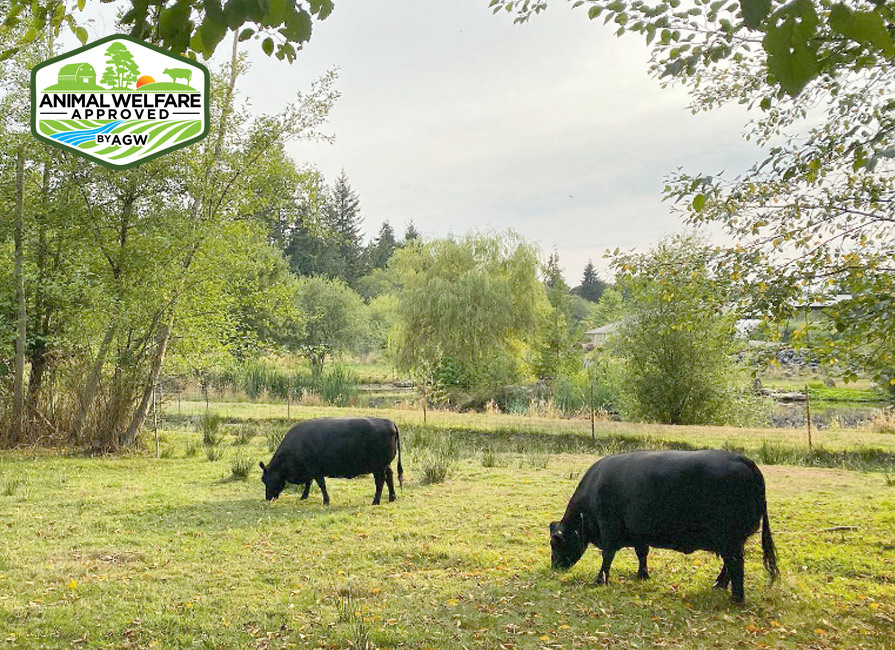Vanessa Frias and her family raise Certified Animal Welfare Approved by A Greener World (AGW)…
UK Study Finds Biodiverse Systems Produce Healthier, Better Tasting Meat

It turns out the old adage “You are what you eat” is true for livestock too. Researchers at the University of Exeter recently published a study which found that meat from animals grazed in quality, biodiverse systems is nutritionally superior to meat from intensive systems. Professor Henry Buller and his colleagues attributed this difference to the impact of the different plants on the digestive process and the growth and development of the animals.
Laboratory analyses showed that lamb meat from biodiverse pastures was seen to have more vitamin E than control meat and higher levels of omega 3 fatty acids – the kind that provide health benefits like protection against heart disease. Levels of conjugated linoleic acid, or CLA, were also higher in biodiverse-fed lambs, compared to conventional controls – another encouraging sign as studies suggest these compounds may have anti-carcinogenic effects. Additionally, levels of a compound called skatole were seen to be lower. Skatole can be produced as a result of the digestive process of grazing animals and has a negative effect on the taste of meat, especially when grilled. Taste panels rated biodiverse beef from traditional breeds to be more tender and more flavorful than meat from conventional breeds.
These findings suggest a natural alignment between environmental conservation and farming. The authors report, “Ultimately, this research offers a different take on sustainable agricultural production; one that is less about leaving ‘as small a footprint as possible’ on some pre-existing nature, and one that is more about seeing food production and nature production as being mutually constituting.” This gives farmers and eaters an economic incentive to preserve the natural environments which produce such tremendous local flavor. Professor Buller observes, “The British notion of local has become far too fixed on distance. Locality should be about the quality of the place and the relationship between the agricultural and ecological landscape.” The results of this project put biodiversity at the center of the farming system. Biodiversity is often seen as an add-on, something that happens at the fringes of farm activity. But, if improving the biodiversity of the whole farm can feed the animals and give a higher quality meat there is a win-win situation.
While the welfare aspects of grass-fed may not be obvious to the average consumer, what an animal eats has a lot to do with its well-being. Grazing animals like cattle and sheep naturally evolved a complex digestive system with four stomachs to be able to eat grass and other vegetation, and then convert that into milk and meat. In the US these animals are often fed large amounts of grain (for which they did not evolve a digestive process) to get them to grow faster. Since these animals aren’t designed to cope with this grain-heavy feeding they can suffer from liver and digestive problems and have a reduced resistance to disease. This is one reason Animal Welfare Approved has standards to ensure that animals are fed diets appropriate to their needs. Grazing animals on our farms must have access to quality pastures and forages, and there is a limit on the amount of grain they can be fed.
The study has interesting practical implications for British grass-fed producers trying to tweak the nutrient content of their meat, and for future success in labeling and marketing. As the UK does not have feedlot systems and is primarily forage-based, these findings will hopefully fall on open ears. Grass grows well in the UK climate for much of the year and the animals are mainly pastured or fed preserved grass – hay or silage – with the addition of some grain. To date, preference has been given to one or two grass species that produce a lot of bulk. This new study may start farmers thinking about preserving other species that naturally occur, or even planting more diverse pastures with herbs or wild flowers.
Meanwhile in America, we are still trying to get out of the feedlot. Studies abound on the comparative benefits (both physical and ecological) of grass-fed versus feedlot meat, but this knowledge has yet to reach policy-changing proportions. However, the nutrient analysis database Nutritiondata.com just recently published information for grass-fed beef (though not exactly in a way that allows effective comparison), and websites like EatWild.com and the American Grassfed Association are working to share the health benefits of eating meat from grass-fed animals. To the meat lover looking for the healthiest option, the growing body of research paints a pretty clear picture from least healthy to most:
Feedlot > Grass-fed > Biodiverse Pasture-raised.
It just so happens that this continuum parallels the health of the animals.
To download the full research report from the University of Exeter, visit the Economic & Social Research Council website.



